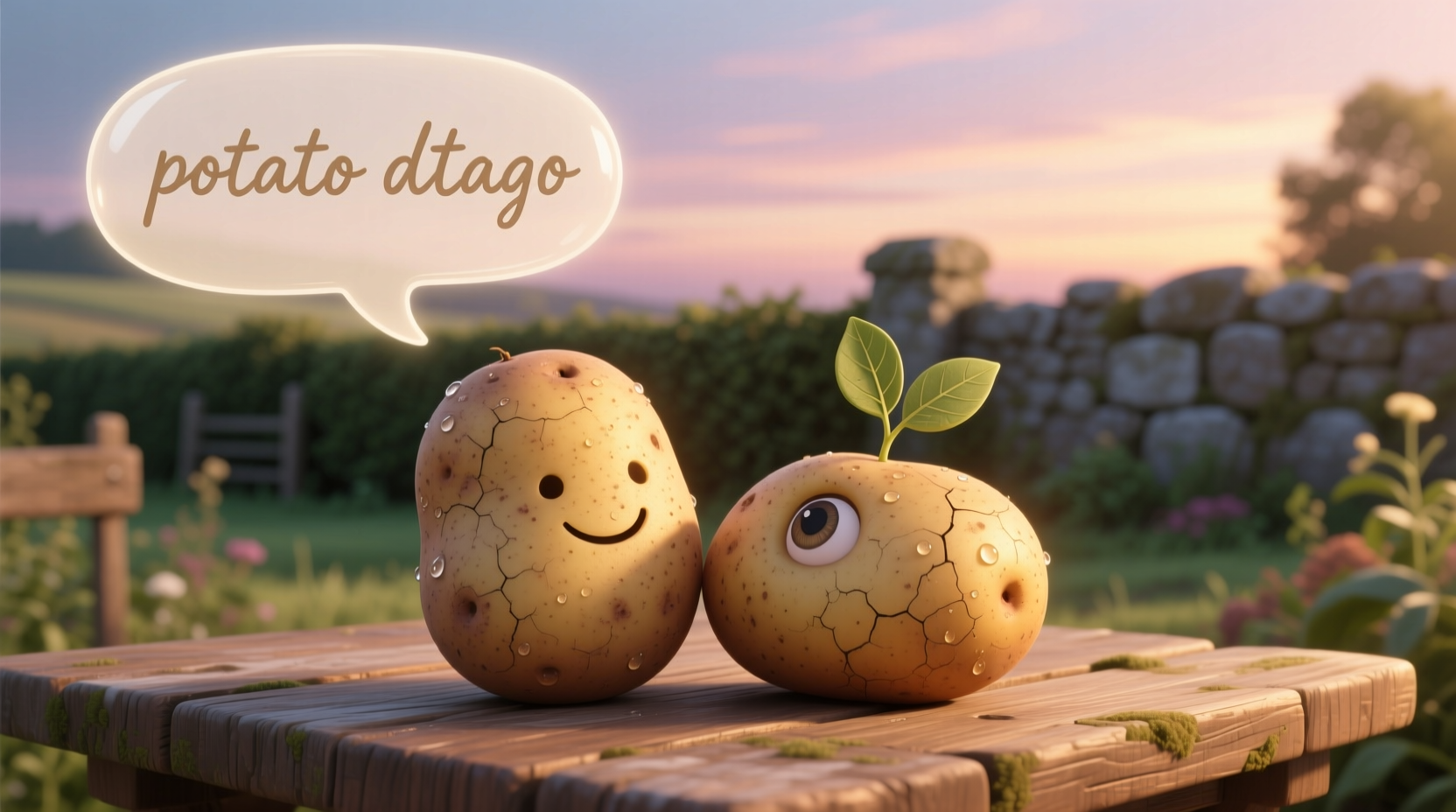If you're searching for information about "potato potato," you're likely looking for comprehensive guidance on potato varieties, cooking methods, or nutritional information. Potatoes are one of the world's most versatile and widely consumed vegetables, with over 4,000 varieties grown globally. This guide provides practical, science-backed information about selecting, preparing, and maximizing the nutritional benefits of potatoes—whether you're a home cook, gardener, or simply curious about this staple food.
Understanding the "Potato Potato" Query: What You Really Need to Know
When searching for "potato potato," most users are actually seeking reliable information about potato varieties, cooking techniques, or nutritional profiles. This repetition might indicate uncertainty about what specific potato information they need. Let's clarify the essentials you'll want to understand about this versatile vegetable.
Why Potato Variety Matters: Choosing the Right Type for Your Needs
Not all potatoes are created equal. Selecting the appropriate variety dramatically impacts your cooking results. Potatoes fall into three main categories based on starch content, each suited for specific culinary applications:
| Potato Type | Starch Content | Best Cooking Methods | Common Varieties |
|---|---|---|---|
| Starchy | High (20-22%) | Baking, mashing, frying | Russet, Idaho, Yukon Gold |
| Waxy | Low (16-18%) | Boiling, roasting, salads | Red Bliss, Fingerling, New Potatoes |
| All-Purpose | Medium (18-20%) | Versatile for most methods | Yukon Gold, Purple Majesty, Kennebec |
According to the USDA Agricultural Research Service, starch content directly affects texture and cooking behavior. High-starch potatoes break down easily when cooked, creating fluffy mashed potatoes but falling apart in salads. Waxy potatoes maintain their shape better but won't achieve that desirable fluffiness.
The Evolution of Potatoes: From Andes to Global Staple
Understanding potatoes' historical journey provides context for their current varieties and uses. This timeline reveals how cultivation practices have evolved:
- 8,000-5,000 BCE: First domestication in the Andes Mountains of South America
- 1536: Spanish conquistadors bring potatoes to Europe
- 1719: Potatoes introduced to North America in Londonderry, New Hampshire
- 1845-1852: Irish Potato Famine devastates Ireland, changing global agricultural practices
- 1950s: Development of disease-resistant varieties transforms commercial farming
- Present: Over 4,000 varieties grown worldwide, with continuous breeding for improved nutrition and climate resilience
This historical progression, documented by the UN Food and Agriculture Organization, explains why certain varieties excel in specific culinary applications today.

Practical Potato Selection Guide: What Supermarkets Won't Tell You
Choosing quality potatoes requires knowing what to look for beyond surface appearance. Follow these evidence-based selection criteria:
Visual Inspection Checklist
- Skin condition: Should be firm, smooth, and free of green patches (which indicate solanine, a natural toxin)
- Eyes (sprouts): Minimal sprouting indicates freshness; avoid potatoes with deep sprouts
- Shape consistency: Uniform shape suggests proper growing conditions and better cooking results
- Color variation: Different colors indicate varying nutrient profiles (purple potatoes contain anthocyanins)
Context-Specific Selection Guidelines
Not all potatoes work for every recipe. These context boundaries will prevent cooking disasters:
- For mashed potatoes: High-starch varieties like Russets yield the fluffiest results (starch content 20-22%)
- For potato salad: Waxy potatoes like Red Bliss maintain shape when boiled (starch content 16-18%)
- For roasting: All-purpose Yukon Gold provides the perfect balance of crisp exterior and creamy interior
- For frying: Russets' high starch content creates the crispiest french fries
Maximizing Nutritional Value: Science-Backed Preparation Methods
How you prepare potatoes significantly impacts their nutritional profile. Research from the National Center for Biotechnology Information shows that cooking method affects nutrient retention:
- Boiling: Causes 30-40% loss of water-soluble vitamins like vitamin C and B vitamins
- Baking: Preserves up to 90% of nutrients when cooked with skin on
- Steaming: Retains more nutrients than boiling while still softening texture
- Microwaving: Preserves nutrients effectively with minimal water contact
Pro tip: Always cook potatoes with their skin on when possible—the skin contains nearly half the fiber and significant potassium. According to USDA data, a medium potato with skin provides 26% of your daily fiber needs and 27% of potassium requirements.
Avoiding Common Potato Problems: Troubleshooting Guide
Even experienced cooks encounter potato-related issues. Here's how to solve the most frequent problems:
Mushy Mashed Potatoes
Cause: Using waxy potatoes or overworking the potatoes Solution: Choose high-starch varieties and use a potato ricer instead of a food processor
Brown or Discolored Potatoes
Cause: Enzymatic browning after cutting Solution: Soak cut potatoes in cold water with lemon juice or vinegar (1 tablespoon per quart)
Sprouting or Greening in Storage
Cause: Exposure to light or improper temperature Solution: Store in cool, dark place between 45-50°F (7-10°C) with proper ventilation
Proper Potato Storage: Extending Freshness Up to 6 Months
Improper storage causes 30% of household potato waste according to USDA food waste statistics. Follow these evidence-based storage guidelines:
- Temperature: 45-50°F (7-10°C) is ideal—never refrigerate (causes sweetening)
- Humidity: 90-95% relative humidity prevents shriveling
- Light: Complete darkness prevents greening and solanine production
- Airflow: Mesh bags or wooden crates allow proper ventilation
- Separation: Store away from onions (they release gases that accelerate sprouting)
For long-term storage, cure potatoes at 50-60°F (10-15°C) with high humidity for 10-14 days before moving to cooler storage. This process thickens the skin and extends shelf life significantly.
Practical Potato Applications: From Basic to Brilliant
Transform your potato dishes with these professional techniques:
Perfect Roasted Potatoes Every Time
- Parboil potatoes for 5-7 minutes in salted water with 1 tablespoon of vinegar
- Shake parboiled potatoes in the colander to roughen edges
- Roast at 425°F (220°C) with duck fat or high-smoke-point oil
- Flip once halfway through for even crispness
Fluffy Mashed Potatoes Secret
Warm your dairy ingredients before adding to potatoes. Cold milk causes the starch to seize, creating gluey texture. For ultimate fluffiness, use a food mill instead of a mixer to avoid overworking the starch.











 浙公网安备
33010002000092号
浙公网安备
33010002000092号 浙B2-20120091-4
浙B2-20120091-4